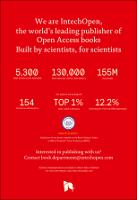Chapter Machine Learning in Volcanology: A Review
Author(s)
Carniel, Roberto
Guzmán, Silvina
Language
EnglishAbstract
A volcano is a complex system, and the characterization of its state at any given time is not an easy task. Monitoring data can be used to estimate the probability of an unrest and/or an eruption episode. These can include seismic, magnetic, electromagnetic, deformation, infrasonic, thermal, geochemical data or, in an ideal situation, a combination of them. Merging data of different origins is a non-trivial task, and often even extracting few relevant and information-rich parameters from a homogeneous time series is already challenging. The key to the characterization of volcanic regimes is in fact a process of data reduction that should produce a relatively small vector of features. The next step is the interpretation of the resulting features, through the recognition of similar vectors and for example, their association to a given state of the volcano. This can lead in turn to highlight possible precursors of unrests and eruptions. This final step can benefit from the application of machine learning techniques, that are able to process big data in an efficient way. Other applications of machine learning in volcanology include the analysis and classification of geological, geochemical and petrological “static” data to infer for example, the possible source and mechanism of observed deposits, the analysis of satellite imagery to quickly classify vast regions difficult to investigate on the ground or, again, to detect changes that could indicate an unrest. Moreover, the use of machine learning is gaining importance in other areas of volcanology, not only for monitoring purposes but for differentiating particular geochemical patterns, stratigraphic issues, differentiating morphological patterns of volcanic edifices, or to assess spatial distribution of volcanoes. Machine learning is helpful in the discrimination of magmatic complexes, in distinguishing tectonic settings of volcanic rocks, in the evaluation of correlations of volcanic units, being particularly helpful in tephrochronology, etc. In this chapter we will review the relevant methods and results published in the last decades using machine learning in volcanology, both with respect to the choice of the optimal feature vectors and to their subsequent classification, taking into account both the unsupervised and the supervised approaches.
Keywords
machine learning, volcano seismology, volcano geophysics, volcano geochemistry, volcano geology, data reduction, feature vectorsDOI
10.5772/intechopen.94217Publisher
InTechOpenPublisher website
https://www.intechopen.com/Publication date and place
2020Classification
Earth sciences


 Download
Download